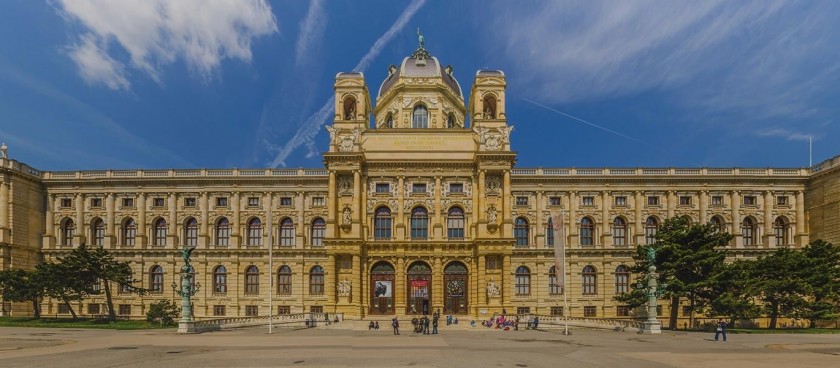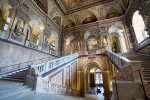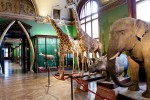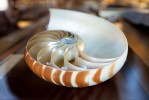- #AT09
- Burgring 7, 1010 Wien, Austria
- +431521770
- https://www.stiftadmont.at/en/museums...
- Working hours*:
Library tours (Duration 40 minutes, language German) for individual visitors daily at 10:30 and 14:00 - no registration required! - Prices*:
Adults - 11,50€
Senior citizens - 10,50€
Children (6-15 years), those with pupil, student or handicapped ID cards; recruits and civilian service workers € 6,50 - * - opening and closing times as well as entrance prices, are subject to alterations without notice. Visitors are advised to check before visiting.
- 48.2052330, 16.3598340 Copy to clipboard Copy
-
#Museums
Following the disastrous fire at the Abbey in 1865, the Natural History Museum was recreated in the years 1866 – 1906 by the initially just 20-year-old Admont Benedictine monk, Father Gabriel Strobl. During his time as museum curator, Strobl put together an immense collection of insects that eventually came to total some 252,000 different examples. His compilation of more than 50,000 specimens of two-winged insects of the order Diptera is among the most important of its kind in Europe. By means of his own collecting activities and in the form of exchanges, purchases and bequests, Father Gabriel Strobl acquired over the 44 years of his curatorship the extraordinary range of exhibits that can now be admired in the Natural History Museum, which itself has recently undergone partial restructuring.
During the conversion work and reorganisation of the museum landscape at Admont Abbey, the rooms of the Natural History Museum were also renovated, being officially reopened on 2 May 2004. When the visitor enters the Natural History Museum, they first encounter the world of reptiles and amphibians; there is a more than 2 m long (stuffed) Mississippi alligator and a wealth of snakes, lizards and tortoises preserved by taxidermy or in alcohol. There is a long ribbon of display cases with information and exhibits relating to the development of the Natural History Museum. The first side room is dedicated to the scientific and artistic achievements of Father Gabriel Strobl. Hanging on the walls are cases containing carefully ordered groups of insects.
Insect collection
The insect collection at Admont is of special significance, particularly the assortment of two-winged insects assembled by Father Gabriel Strobl more than 100 years ago. In fact, research into the specimens in this collection is still on-going. The Abbey maintains contacts with various international institutions and leading specialists in the field who are busy with the analysis of the collection and type identification. Scientific articles and recently published books, including that by Milan Chvála, demonstrate the importance assigned to the collection by the research community.
The wax fruits by Father Constantin Keller
To be seen in an impressive installation in the second side room are all 243 examples of wax fruits modelled by Father Constantin Keller (1778 – 1864). The room itself has a form not unlike that of a fruit thanks to the curved outlines of the display cases . These hold the unique items fashioned by Father Constantin using fruits that he had cultivated himself as models. The wax fruits are of an extremely high quality and in appearance are almost perfect reproductions of the natural examples. Included are varieties of fruits that have since largely disappeared from the range of products.
The passion of naturalists
Visitors are able to experience in the third side room the fruits of a joint project involving Admont Abbey and Gesäuse National Park. By presenting the passion for their topic exhibited by naturalists, this permanent exhibition is intended to stimulate the interest of visitors in the world of nature and specifically encourage them to visit the nearby Gesäuse National Park.
The second gallery corridor contains specimens of creatures from the various natural kingdoms that live in the elements ‘Earth, Air and Water’. European butterflies with dried and pressed examples of cryptogams (plants that reproduce by spores) are on view in historical display cases along the right wall and reflect the harmonious coexistence of plants and animals. The third living environment ‒ ‘Water’ ‒ is represented here by a collection of conch shells and preserved fishes.The so-called ‘Lion room’ has been left largely in its original state. It bears this name because of the large stuffed East African lion that Father Gabriel Strobl acquired from the famous African explorer Emil Holub. Also in their original cases are other valuable examples of mainly exotic mammals and birds.
The South-eastern Pavilion
The visitor’s ‘stroll through nature’ concludes in the so-called ‘South-eastern Pavilion’ with its magnificent views of the National Park. This was formerly the only room of the Natural History Museum and it contains, in addition to an extensive array of precious, semi-precious stones and minerals, a colourful display of European and local mammals and birds.
It is thanks to the work of Father Gabriel Strobl (1846 – 1925) who, in his first 12 years as curator of the Natural History Museum dedicated himself mainly to the discipline of botany and then, in the following 32 years, immersed himself in the study of insects (entomology) that Admont Abbey has achieved such a reputation for scientific research. Abbeys and monasteries have always been storehouses of knowledge and providers of education. Admont Benedictine Abbey sees it as its task to continue this tradition as far as it is able and to help preserve our environment as that part of creation that has been given into our care.
The whole museum is barrier-free!



